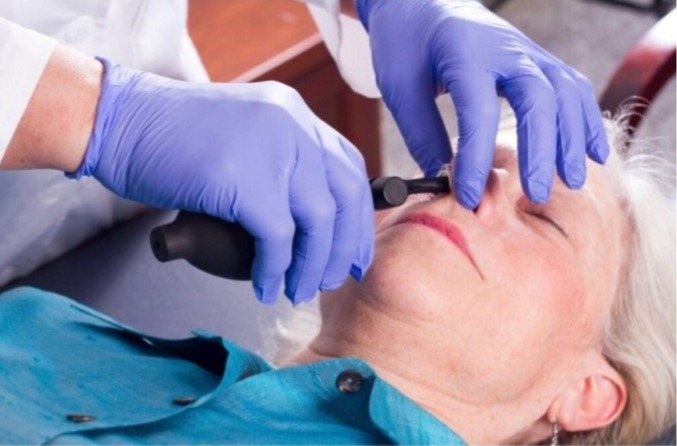The Nasal Release Technique is a specialized method designed to adjust the bones in the head by accessing the nasal passages. This innovative technique uses a small, soft balloon that’s gently inserted into the nasal cavity. When inflated, the balloon applies pressure to the bones within the nose, particularly the sphenoid bone, helping to realign the sutures where the skull bones meet. This adjustment aims to relieve any built-up pressure in the skull by addressing these sutures.
The Nasal Release Technique offers more than just skeletal adjustment. Untreated concussions can result in severe symptoms, increased pain, and a prolonged recovery process. This treatment can be particularly beneficial for athletes, military personnel, and those in high-risk professions, where head injuries are common. Early intervention with this technique can significantly impact recovery.
How the Nasal Release Technique Works
Our bodies constantly strive for balance, but concussions or birth traumas can disrupt the alignment of the skull’s bones, leading to various issues such as poor posture, breathing difficulties, pain, and even emotional distress like depression. The Nasal Release Technique helps realign the bones, enhance neurotransmitter activity, and support the central nervous system.
The Nasal Release Technique is a gentle and non-invasive procedure. A finger cot, attached to a blood pressure bulb, is inserted into the nasal passages, with lubrication ensuring comfort. As the bulb inflates, you may feel gentle pressure in your nose and head. This process is repeated in different areas of the nasal passages to ensure balance and optimal effectiveness.
Conditions and Symptoms Addressed
The Nasal Release Technique has been found helpful in treating a variety of conditions, including:
Concussions and head injuries including TBI (Traumatic Brain Injury)
Headaches and migraines
Sinusitis, sleep apnea, and snoring
TMJ (Temporomandibular joint dysfunction)
Tinnitus
Vertigo and balance problems
Neck and shoulder pain
Contraindications and Side Effects
As with any medical treatment, there are contraindications and potential side effects. Patients with bleeding disorders or on anticoagulant medications should be cautious. Those who have had previous nasal or facial bone surgeries, particularly involving the turbinates, may not be suitable for this treatment. In rare instances, asthma attacks have been reported, so patients with asthma are advised to have their inhalers available. A thorough medical history is reviewed to ensure this technique is appropriate for each patient.
Possible side effects may include nosebleeds, minor soreness or tenderness in the nasal passages, tingling in the upper teeth, gum soreness, or occasional headaches. Temporary throat irritation from increased sinus drainage may also occur. Our practitioner prioritizes patient safety and comfort throughout the process.
Conclusion
The Nasal Release Technique is a gentle, non-invasive procedure designed to realign the bones of the skull, relieving pressure and supporting overall well-being. While generally safe, careful screening and consideration of contraindications ensure it is applied appropriately for each patient.
If you would like to learn more about this, please reach out to us, as we offer complimentary consultations! This treatment option is offered by Dr. Albert Varela.

